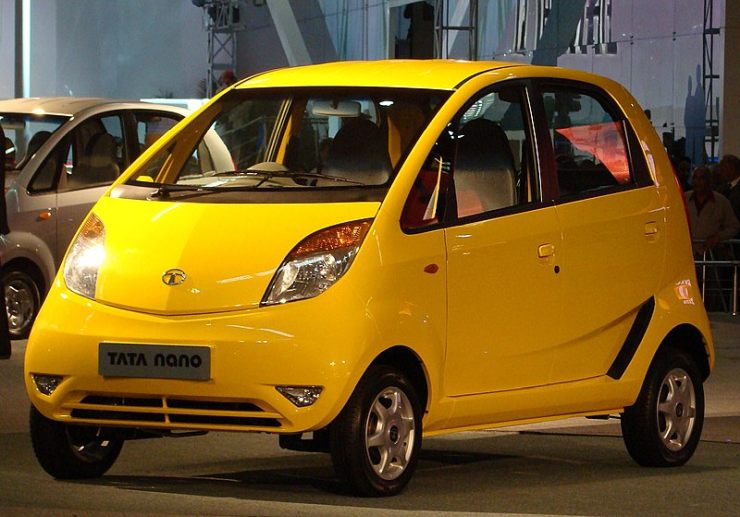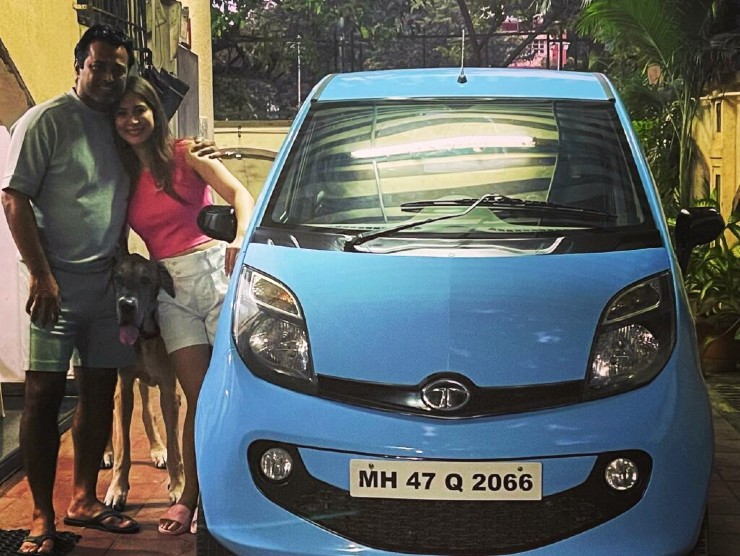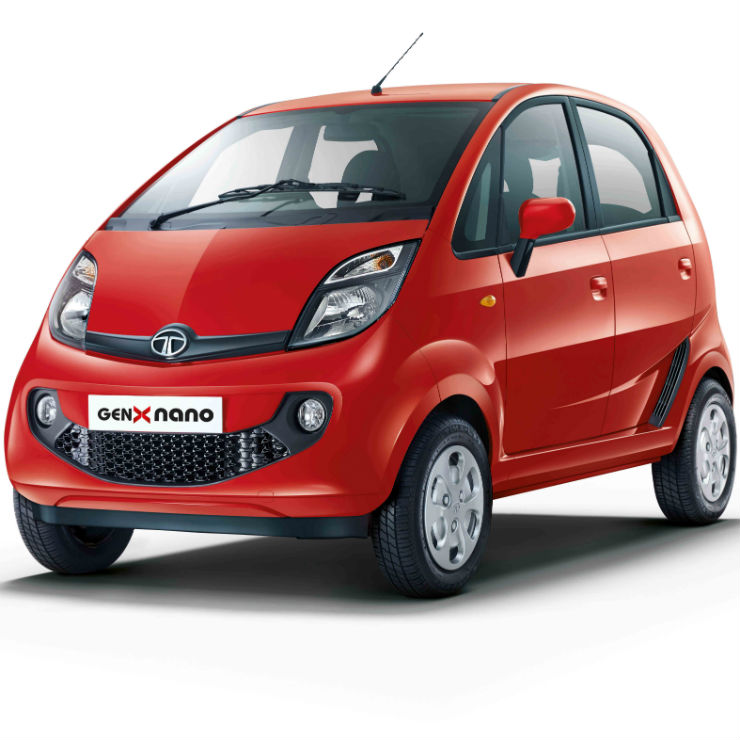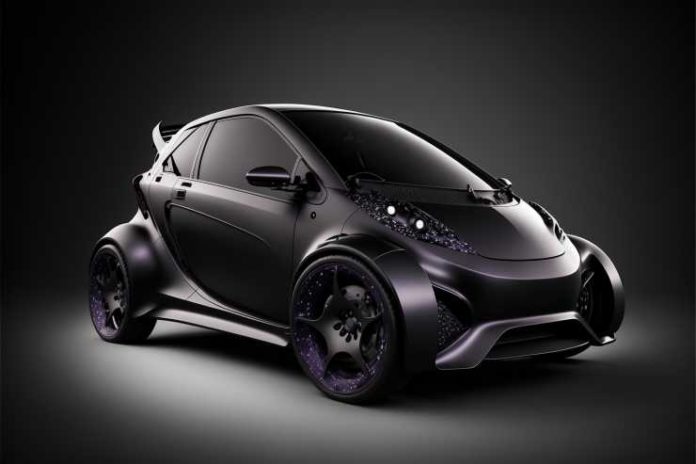Note: This article explores a hypothetical scenario. There are no official plans for the products discussed.
The Tata Nano and Maruti WagonR are familiar names in the Indian automobile market, each representing different aspirations and outcomes. The Nano, envisioned as the world’s cheapest car designed to put India’s two-wheeler families on to four wheels, and the WagonR, a consistently popular urban hatchback, tell stories of innovation, market realities, and consumer preferences.
The WagonR did the job it was designed for, and very well too. The Tata Nano? Not so much. After years of disappointing sales, Tata Motors had to discontinue the Nano. But in India’s fast-evolving automotive landscape, particularly towards electric vehicles (EVs), this is perhaps the right time to explore a resurgence of the Nano, this time as an electric vehicle.
Nano and WagonR: Brief Histories

The Tata Nano was launched in 2008 with great fanfare, aimed at making car ownership accessible to every Indian family. However, its journey was riddled with challenges from the start, including production and relocation issues, safety concerns, and a market perception of the Nano as a “cheap” car rather than an affordable one. Despite initial high expectations, the Nano’s sales dwindled, leading to its eventual discontinuation in 2018.
In contrast, the Maruti WagonR debuted in India in 1999 and has since become one of the best-selling cars in the country. The car has gone through multiple generations and sold more than 30 lakh units in India!
Known for its tall-boy design and reliable performance, the WagonR has consistently appealed to urban drivers. According to the latest sales data, the Maruti WagonR continues to perform strongly, often appearing in the top ten best-selling cars in India, with thousands sold each month, underscoring its enduring popularity.

The Fall of the Nano
The Tata Nano failed for several reasons. Initially, its safety was questioned after reports of some vehicles catching fire. Moreover, its marketing as the cheapest car worked against it, as owning a ‘cheap’ car did not resonate with aspirational buyers. Over time, the entry-level market segment saw increasing competition from used cars and other affordably priced new cars, which offered more status and better features for a slightly higher price.
The Rise of EVs in India
Now, we find ourselves in the era of EVs. The Indian government is vigorously promoting electric mobility through various incentives and infrastructure support, aiming to reduce carbon emissions and dependence on imported oil. The timing seems perfect for the revival of the Tata Nano as an electric vehicle. Pretty much all automobile manufacturers in India currently sell EVs, and those who do not are in the process of launching theirs, such as Maruti’s EVx.
Current EV Market Scenario
India’s EV market, though in its nascent stage, is growing rapidly. Several new entrants and established automakers are vying to capture the interest of environmentally conscious consumers. The cheapest EVs in India currently range between Rs 8 to 10 lakh, which positions them as premium products rather than mass-market solutions. The Tata Tiago.EV is priced at approx Rs 8 lakhs. The MG Comet EV starts Rs 7 lakhs.
There is potential here at the lower end of the market. If Tata can produce a Nano EV that means the demand of the customer of the 2020s, there is a high likelihood that it would be a strong challenger to ICE workhorses such as the Maruti WagonR or Hyundai Grand i10.
What Should A Nano EV Offer?

Electric Powertrain
The Tata Nano electric variant would feature an all-electric powertrain, emphasizing zero-emission driving and contributing to environmental sustainability.
It could have a compact electric motor with sufficient power for urban commuting, maintaining the Nano’s reputation as a city-friendly car.
Range and Battery
A competitive range on a single charge, ideally targeting around 200-300 kilometers per charge to cater to daily commuting needs without frequent recharging.
Fast-charging capabilities to recharge the battery quickly, enhancing convenience for urban drivers.
Design and Size

Retain the compact dimensions and lightweight design that made the original Tata Nano popular for maneuverability in congested city streets.
Modernize the exterior design with sleek lines and contemporary styling cues, while retaining the Nano’s distinctive appearance.
Interior Features
Comfortable seating for four passengers, ensuring adequate legroom and headroom within its compact footprint.
Integration of modern infotainment systems, connectivity features, and possibly advanced driver-assistance systems (ADAS) for safety and convenience.
Safety Features
A minimum of a GlobalNCAP or BharatNCAP 4-5 star rating. Robust safety features such as airbags, ABS (Anti-lock Braking System), stability control, and reinforced body structure to meet current safety standards. Focus on pedestrian safety with features like pedestrian detection and collision avoidance systems.
The right price!
This is the most important factor. The Nano EV will definitely not be a cheap car. It has to look very attractive as a value for money electric car, however. A price tag similar to that of the MG Comet EV, or slightly above, should do the job.
Potential for a Nano EV
Tata Motors, recognizing the shift towards electric mobility, has focused its efforts on becoming a leader in the EV segment. The company already has successes under its belt with models like the Nexon EV, which have been well received. Given this backdrop, a radical, all-new Tata Nano EV could be a game changer. If Tata could introduce a Nano EV priced competitively against the popular Maruti WagonR, and devoid of the original Nano’s negatives, it could potentially capture a significant market share.
For the Nano EV to succeed, it must adhere to the safety and feature expectations of 2024. This includes modern safety measures, advanced driver assistance systems (ADAS), and a range sufficient to allay any fears of range anxiety. It would also need to shed the stigma of being a ‘cheap’ product, instead positioned as a smart, eco-friendly urban car.
What we propose is not just a revival but a reinvention of the Tata Nano. An all-new Nano EV, positioned correctly, could challenge the dominance of cars like the Maruti WagonR in the urban compact segment. Tata Motors has the technology, the manufacturing capability, and, importantly, a second chance to redefine what a small, affordable car can be in India. The potential success of a Nano EV could reshape perceptions and market dynamics, much like the original Nano intended to do. It’s a bold vision, and one that could pay off handsomely for Tata and for millions of Indian drivers looking to go electric.
The post Could A Super-Modern Tata Nano EV Beat Maruti WagonR? first appeared on Cartoq.
Source link

